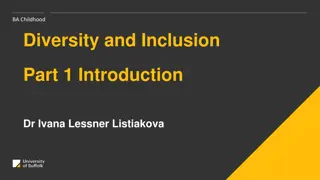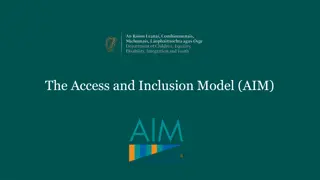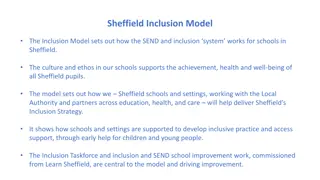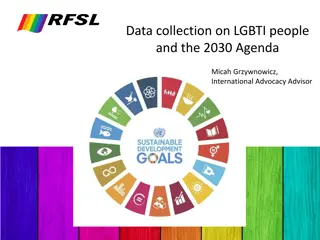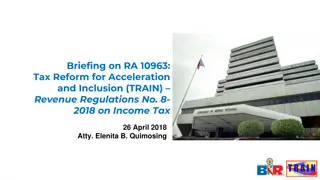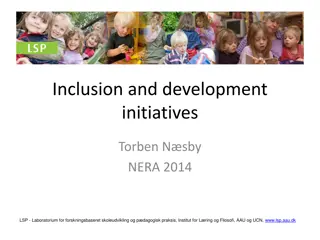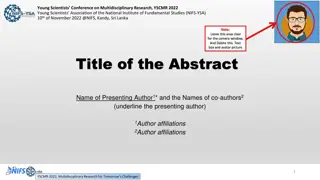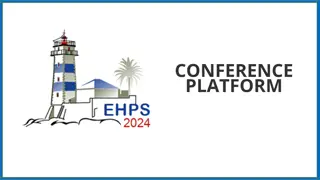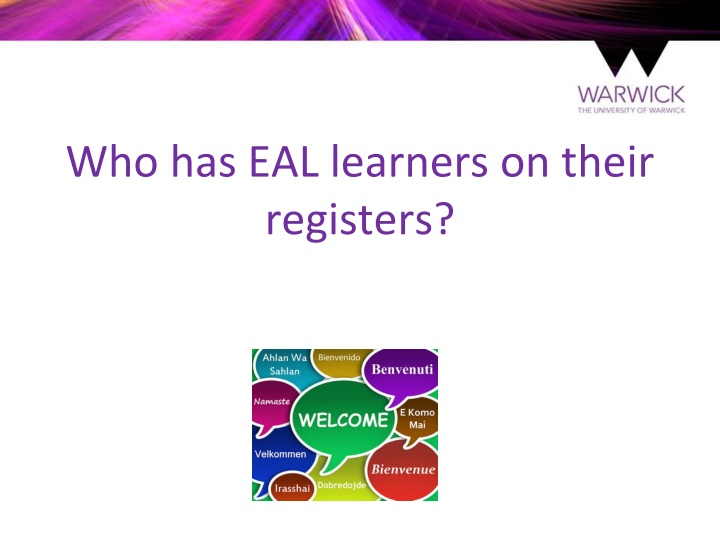
Impact of EAL Learners in Classrooms
Explore the context of English as an Additional Language (EAL) learners in UK schools, highlighting the linguistic interdependence hypothesis, BICS and CALP skills, and the correlation between English proficiency levels and educational achievement. Discover how educators can support EAL learners for better outcomes in the classroom.
Download Presentation

Please find below an Image/Link to download the presentation.
The content on the website is provided AS IS for your information and personal use only. It may not be sold, licensed, or shared on other websites without obtaining consent from the author. If you encounter any issues during the download, it is possible that the publisher has removed the file from their server.
You are allowed to download the files provided on this website for personal or commercial use, subject to the condition that they are used lawfully. All files are the property of their respective owners.
The content on the website is provided AS IS for your information and personal use only. It may not be sold, licensed, or shared on other websites without obtaining consent from the author.
E N D
Presentation Transcript
Who has EAL learners on their registers?
Centre for Teacher Education EAL Learners in the classroom: a workshop Our Aim: Grade One Outstanding January 17th 2022
EAL learners: context Over 1.56 million learners identified as having English as an additional language in UK maintained schools (19.6% of all learners aged 5-16) 1 in 11 schools have more than 50% EAL learners DfE records a learner as EAL if they are exposed to a language at home that is known or believed to be other than English. A learner recorded as EAL at age 4 will continue to be recorded as such throughout their education What is the impact of this on our classrooms?
BICS and CALP Cummins BICS: Basic Interpersonal Communication skills = conversational fluency in a language CALP: Cognitive Academic Language Proficiency = students ability to understand and express, in both oral and written modes concepts and ideas that are relevant to school. (Cummins 2008) Cummins argues that educators and policy makers frequently conflated conversational and academic dimensions of English language proficiency and that this conflation contributed significantly to the creation of academic difficulties for students who were learning English as an additional language. Cummins J., BICS and CALP: Empirical and Theoretical Status of the Distinction (2014) In Street, B. & Hornberger, N. H. (Eds.). (2008). Encyclopaedia of Language and Education, 2nd Edition, Volume 2: Literacy. (pp. 71-83). New York: Springer Science + Business Media LLC
Linguistic Interdependence Hypothesis Cummins, J. 1981, Bilingualism and Minority Language Children, Toronto: Ontario Institute for Studies in Education
EAL learners and attainment Oxford University Research 2018 Hessel A., and Strands. (2018) English as an Additional Language, proficiency in English and pupils educational achievement: An analysis of Local Authority data Oxford University Press
EAL and Achievement: findings of the Oxford study EAL is a diverse and heterogeneous group of learners therefore proficiency of English levels are a more important indicator of likely achievement, than the coding EAL The Proficiency in English Scale should be reinstated. Early years and KS1 require most support, but data indicates 1 in 6 EAL learners at KS4 would benefit from support. Bilingualism is not in itself a barrier to learning, in fact it can positive associations with achievement Hessel A., and Strands. (2018) English as an Additional Language, proficiency in English and pupils educational achievement: An analysis of Local Authority data Oxford University Press
EAL learners and policy No separate National Curriculum for EAL learners The DfE expect that effective teaching and learning for EAL pupils will happen through the National Curriculum. The EIF doesn t mention EAL learners specifically, but states that the curriculum should be designed to give all learners .the knowledge and cultural capital they need to succeed in life . Proficiency in English only assessed by schools between 2016 and 2018 Which Teaching Standard mentions learners with English as an additional language?
Enquiry question What planning and teaching challenges might you face with EAL learners? Write your comments in the chat.
Enquiry question What learning barriers might EAL pupils face? Write your comments in the chat.
Possible Social and cultural barriers Unfamiliar classroom norms, expectations and routines View of teacher Culture shock Prior experience of schooling related to age or consistency School starting ages are different between different countries. Feelings of isolation and being unable to make their needs known particularly at break times
Possible Learning barriers Low literacy levels in L1 Uneven skills profile Levels of English proficiency of parents and siblings Perception of certain groups as either high or low achievers Teaching and learning approaches may be unfamiliar, for example more didactic The language of learning will contain many vocabulary items specific to the subject that will be unfamiliar EAL learners are sometimes categorised with SEND and inappropriately labelled as low ability (Cummins: BICS and CALP) Alphabetic differences and logographic (symbols represent words) languages form L1 to L2 present writing challenges Cummins J., BICS and CALP: Empirical and Theoretical Status of the Distinction (2014) In Street, B. & Hornberger, N. H. (Eds.). (2008). Encyclopaedia of Language and Education, 2nd Edition, Volume 2: Literacy. (pp. 71-83). New York: Springer Science + Business Media LLC.
The disadvantage gap: EPI Annual report The gap between pupils EAL pupils arriving late in secondary school and their white British peers has widened over the last decade. research shows that the stage at which EAL pupils enter the English education system is key: the later they enter, the more disadvantaged they are, and this is related to their proficiency in the English language. At the end of primary school, late-arriving EAL pupils are 15.5 months behind native English speakers; at secondary, they are 20.7 months behind. Akhal A., Hutchinson J and Reader, M. (2020) Education In England Annual Report Education Policy Institute.
The disadvantage gap Recorded as fluent/competent SEND 59% without SEND 64% Primary 51% Secondary 77% 5+ years in English school 80% 1-4 years in English school 40% Department for education (2020) English Proficiency of Pupils with English as an Additional Language
Enquiry question What strategies have you used to support EAL learners in your classrooms? Write your comments in the chat.
Strategies to support EAL learners Translanguaging Reduces the need to lower the cognitive demand Watching videos in first language Bilingual dictionaries Translating key vocabulary Writing initially in first language and then translating Subtitles/google translate (for very short phrases of feedback) Cenoz and Gorter 2017
Strategies to support EAL learners Presenting information visually Helps learners understand the relationship between ideas Venn diagrams Flow charts Bar charts Cause and effect diagrams Substitution tables with images or text https://www.bell-foundation.org.uk/eal-programme/guidance/effective-teaching-of-eal-learners/great-ideas/
Strategies to support EAL learners Chunking sentences/paragraphs into smaller sections (doesn t simplify content) Pre- teaching new vocabulary Providing language models Scaffolding Giving feedback that extends new language learning Collaborative activities in pairs and small groups Communication with home in first language Buddy systems
Case Studies Abas Abas arrives in your class doing the first term in Year 8. He is living with a foster family. He has travelled from Afghanistan alone. It is unclear what his prior experience of school is. He is polite and attentive in class and he can communicate fairly well in spoken English. His proficiency in reading, writing and comprehension is low. He has one to one support in lessons but has told you that he doesn t need this support as the support teacher doesn t speak the same language as him. Irina Irina is Russian and she has come to England with her parents who are academics. She has almost no spoken English and proficiency in reading and writing is very low. You have been informed however that she is a high achiever in her first language. She has joined your class in February of Year 11. How would you support these learners? Or how have you supported an EAL learner in your teaching practice? Consider support for the short and/or long term.
Reflection Maintain high expectations of EAL learners Utilise their prior knowledge Increase motivation by not giving simplified or different content Use a variety of strategies to build language and learning Once proficiency in academic English has ben achieved, bilingualism is an asset.
References and Further Reading Akhal A., Hutchinson J and Reader, M. (2020) Education In England Annual Report Education Policy Institute. Available at file:///C:/Users/u1970267/Downloads/EPI_2020_Annual_Report_.pdf (Accessed 8 March 2021) Cenoz and Gorter (2017) Translanguaging as a Pedagogical Tool in Multilingual Education In Cenoz, J., Gortor D., and May S., (Eds) (2017) Language Awareness and Multilingualism 2nd Edition (pp 310-321) Springer International Publishing Cummins J., BICS and CALP: Empirical and Theoretical Status of the Distinction (2014) In Street, B. & Hornberger, N. H. (Eds.). (2008). Encyclopaedia of Language and Education, 2nd Edition, Volume 2: Literacy. (pp. 71-83). New York: Springer Science + Business Media LLC Department for education (2020) English proficiency of pupils with English as an additional language Available at: https://assets.publishing.service.gov.uk/government/uploads/system/uploads/attachment_data/file/868209/English_proficiency_of_EA L_pupils.pdf (Accessed 8 March 2021) Department for Education (2014) The national curriculum in England: complete framework for key stages 1 to 4. Available at: https://www.gov.uk/government/publications/national-curriculum-in-england-framework-for-key-stages-1-to- 4 (Accessed: 8 March 2021) Hessel A., and Strand S., (2018) English as an Additional Language, proficiency in English and pupils educational achievement: An analysis of Local Authority data Oxford University Press Sutton, D. (2020) New research on EAL learners shows the importance of looking behind headline attainment data. Available at: https://www.bell-foundation.org.uk/news/blog-new-research-on-eal-learners-shows-the-importance-of-looking-behind-headline- attainment-data/ (Accessed 8 march 2021) Trzebiatowski, K (2021) Maintaining high expectations for learners using EAL. Available at https://www.sec-ed.co.uk/best- practice/maintaining-high-expectations-for-learners-using-english-as-an-additional-language-eal-pedagogy-resources-classroom- teaching/ (Accessed 8 March 2021)


